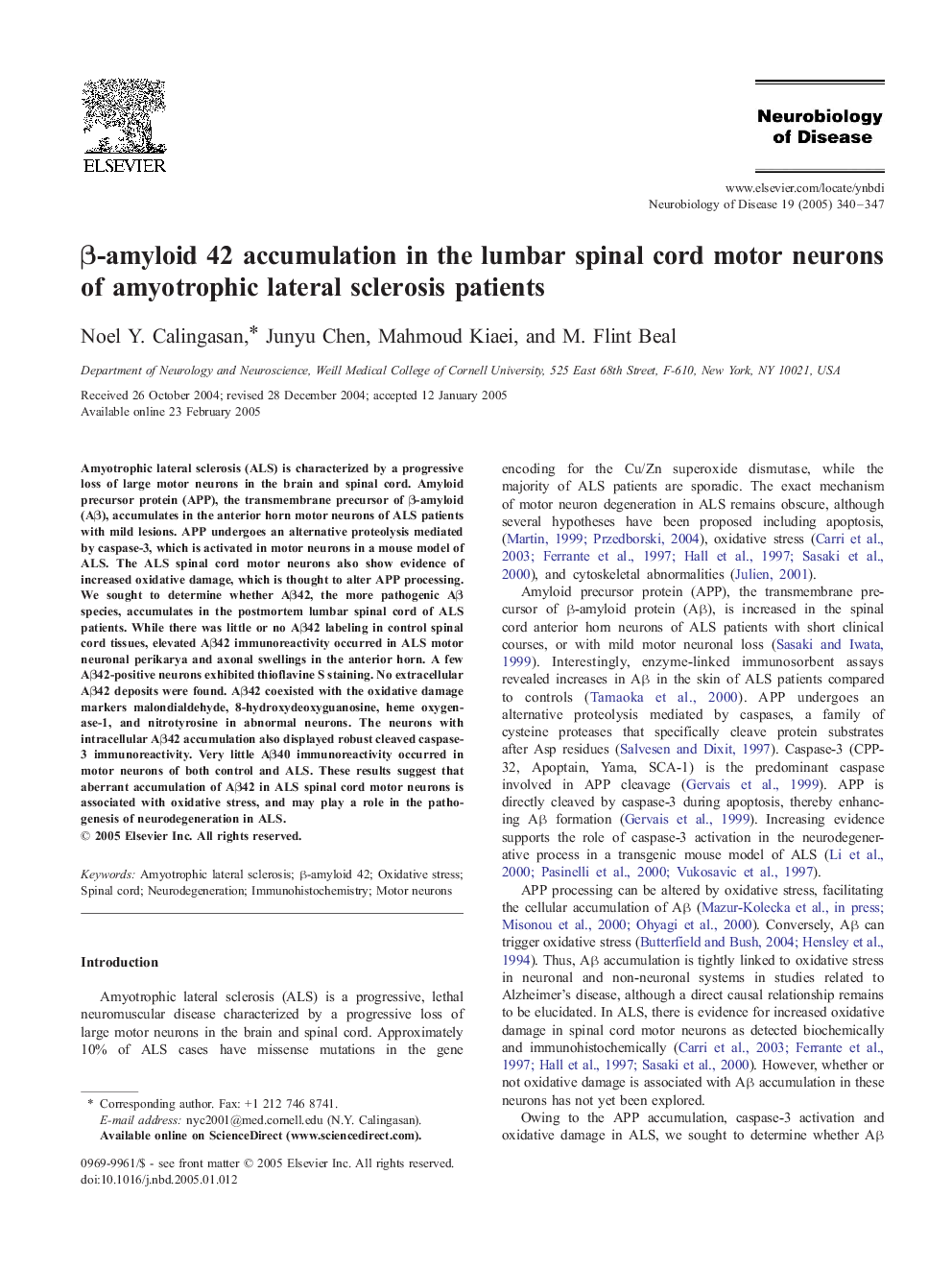| Article ID | Journal | Published Year | Pages | File Type |
|---|---|---|---|---|
| 9989751 | Neurobiology of Disease | 2005 | 8 Pages |
Abstract
Amyotrophic lateral sclerosis (ALS) is characterized by a progressive loss of large motor neurons in the brain and spinal cord. Amyloid precursor protein (APP), the transmembrane precursor of β-amyloid (Aβ), accumulates in the anterior horn motor neurons of ALS patients with mild lesions. APP undergoes an alternative proteolysis mediated by caspase-3, which is activated in motor neurons in a mouse model of ALS. The ALS spinal cord motor neurons also show evidence of increased oxidative damage, which is thought to alter APP processing. We sought to determine whether Aβ42, the more pathogenic Aβ species, accumulates in the postmortem lumbar spinal cord of ALS patients. While there was little or no Aβ42 labeling in control spinal cord tissues, elevated Aβ42 immunoreactivity occurred in ALS motor neuronal perikarya and axonal swellings in the anterior horn. A few Aβ42-positive neurons exhibited thioflavine S staining. No extracellular Aβ42 deposits were found. Aβ42 coexisted with the oxidative damage markers malondialdehyde, 8-hydroxydeoxyguanosine, heme oxygenase-1, and nitrotyrosine in abnormal neurons. The neurons with intracellular Aβ42 accumulation also displayed robust cleaved caspase-3 immunoreactivity. Very little Aβ40 immunoreactivity occurred in motor neurons of both control and ALS. These results suggest that aberrant accumulation of Aβ42 in ALS spinal cord motor neurons is associated with oxidative stress, and may play a role in the pathogenesis of neurodegeneration in ALS.
Keywords
Related Topics
Life Sciences
Neuroscience
Neurology
Authors
Noel Y. Calingasan, Junyu Chen, Mahmoud Kiaei, M. Flint Beal,
